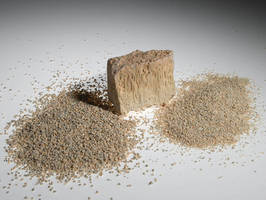
A high purity mullite performs better at higher temperatures since it is free from the impurities that can lower the softening temperature and leach out and diffuse into your products unnecessarily.
What is Mullite?
Mullite or porcelainite is a rare silicate mineral of post-clay genesis. It can form two stoichiometric forms 3Al2O32SiO2 or 2Al2O3 SiO2. Unusually, mullite has no charge balancing cations present. As a result, there are three different Al sites: two distorted tetrahedral Al sites and one Al other site which adopts a higher co-ordinate octahedral state.

Mullite was first described in 1924 for an occurrence on the Isle of Mull, Scotland.[3] It occurs as argillaceous inclusions in volcanic rocks in the Isle of Mull, inclusions in sillimanite within a tonalite at Val Sissone, Italy and with emerylike rocks in Sithean Sluaigh, Scotland.
Use As a Catalyst
Recent research indicates that a synthetic analogue of mullite can be an effective replacement for platinum in reducing the amount of pollution generated by diesel engines.
How Pure is Your Mullite?
Not every mullite is the same and purity levels can vary from one supplier to another. You may or may not know that the fused mullite Washington Mills produces is a higher purity mullite than what most other suppliers manufacture. Other mullites can contain cristobalite and a glass phase. They can also contain titania, iron, alumina, silica and free silica. Washington Mills fused mullite is 99% mullite and 1% alumina. This high level of purity makes our mullite virtually free of impurities. A high purity mullite performs better at higher temperatures since it is free from the impurities that can lower the softening temperature and leach out and diffuse into your products unnecessarily.
If you're interested in abrasives and diamond news, please visit: http://www.iabrasive.com/articles.